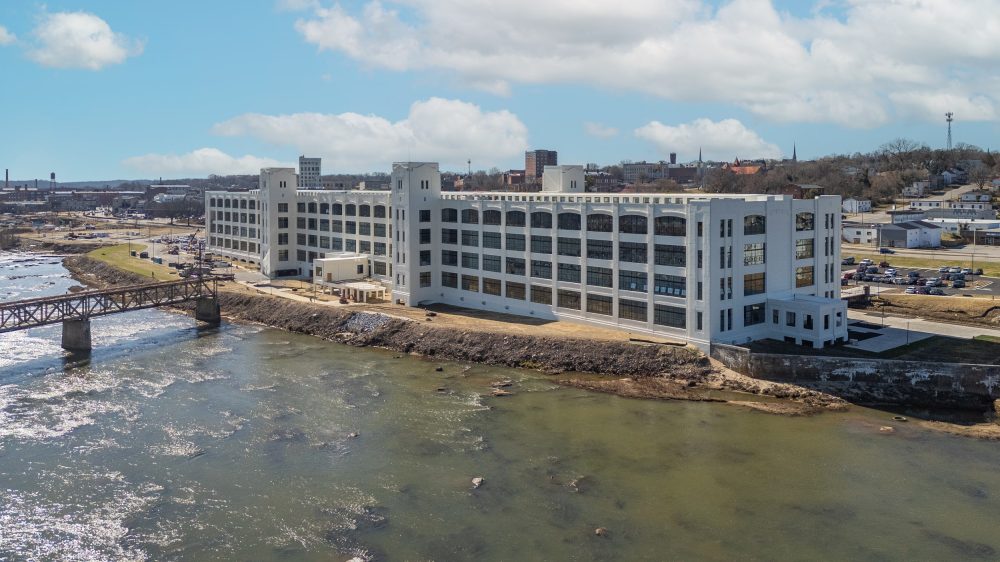After sitting empty for years following the closure of Dan River Inc., the 100-year-old White Mill building is officially on its way to its second life as a commercial and residential development along the river.
Officials and hundreds of residents in the Dan Rvier Region came out to a groundbreaking for the $85 million Dan River Falls project Thursday morning.
“Can’t you feel the excitement”? Danville Mayor Alonzo Jones said to the crows. “I am very excited. Here today, we celebrate the transformation of the Dan River Mill No. 8.”
During his remarks at the event, Jones recalled when Da River closed its doors and shuttered operations in 2006. He remembered the economic and emotional impact the closure had on the community.
“City Council and city staff knew our citizens were looking for answers,” Jones said. “We had to get real busy and get busy quick.”
The city had to take a different approach and begin forming partnerships and building the framework for revitalizing the River District, planting the seeds for growth, he said.
“Today, I’m proud to say I can stand before you and tell you that our city is that comeback city,” Jones said.
Buildings once vacant have new life as living spaces where people can shop, eat, and go for entertainment, he said.
“We are seeing such success not only in the River District, but throughout our city and throughout our region,” he said.
Jones called Danville City Councilman Sherman Saunders up to the stage to unveil the name of the commercial and residential development, “Dan River Falls,” that is expected to be complete in about two years.
“This monumental redevelopment effort that we celebrate today is injecting new energy and investment into a site that was left behind,” he said. “Rather than clinging to the name ‘White Mill,’ we celebrate the site’s history along the Dan River and look toward its future.”
The name “Dan River Falls” is a nod to Dan River Fabrics, the textile powerhouse of which White Mill was a part. It also refers to Wynne’s Falls, the name of the first settlement along the river that became Danville, and the use of the Dan River, the banks on which the mill building sits, as an economic engine.
Click here to continue reading »
This article was originally published by Danville Register & Bee.

